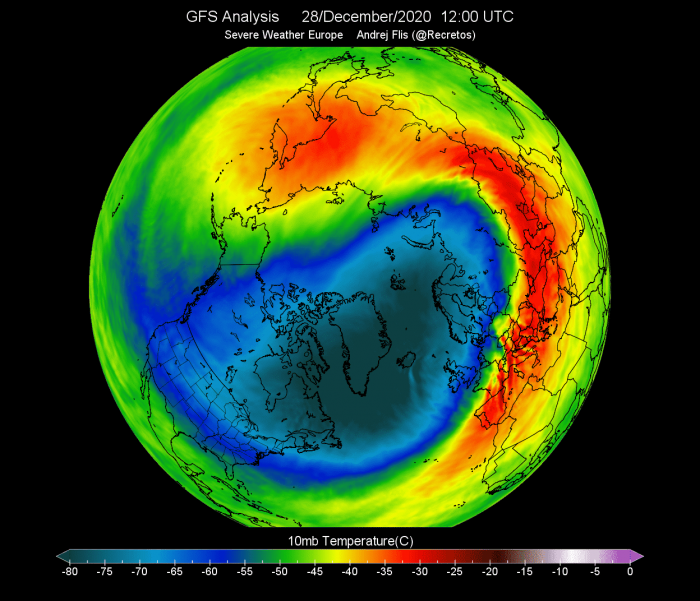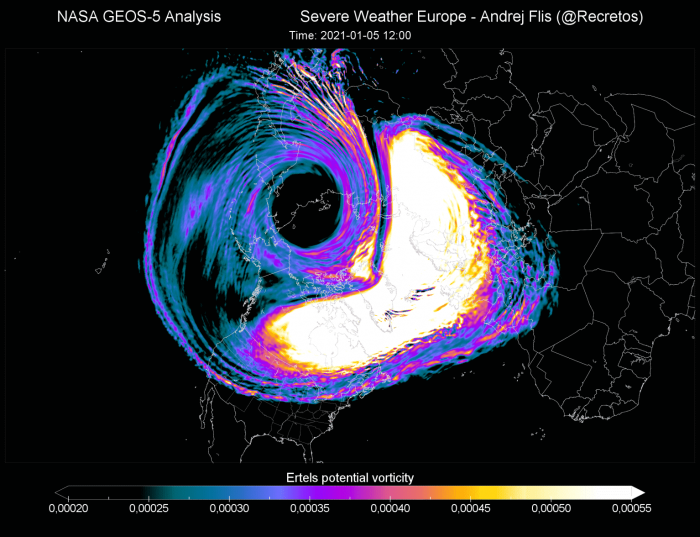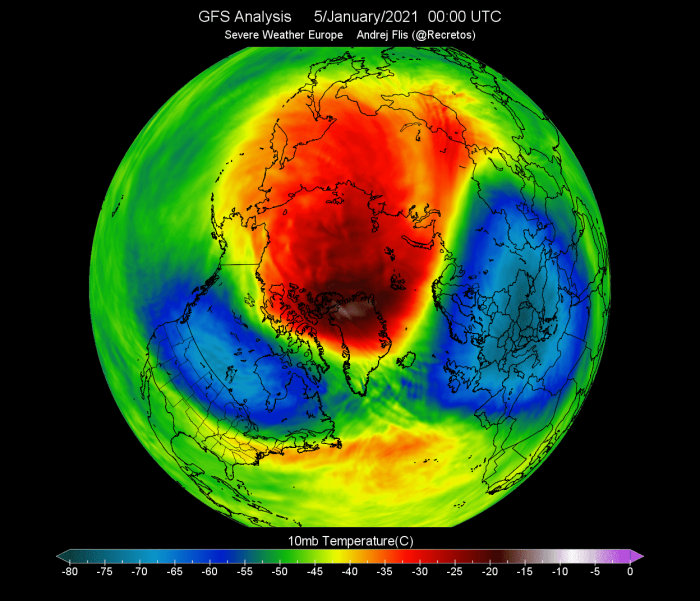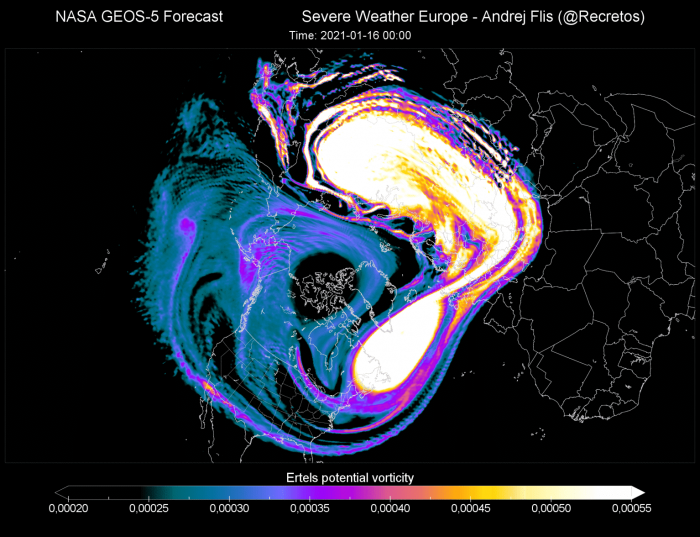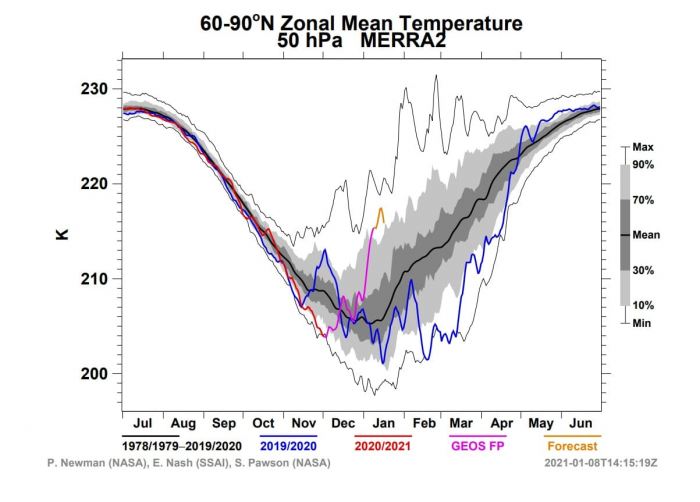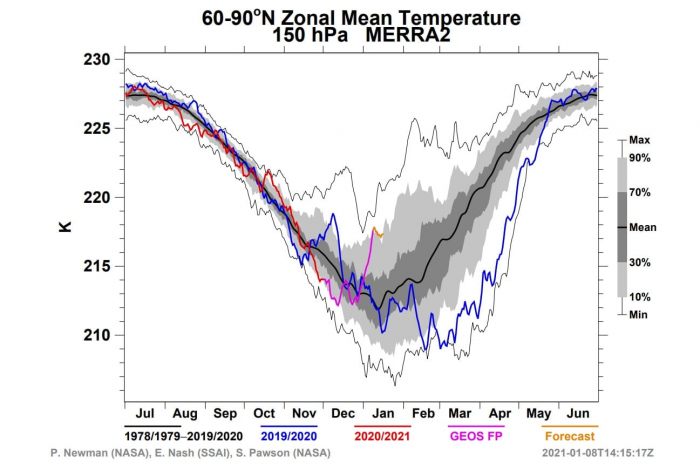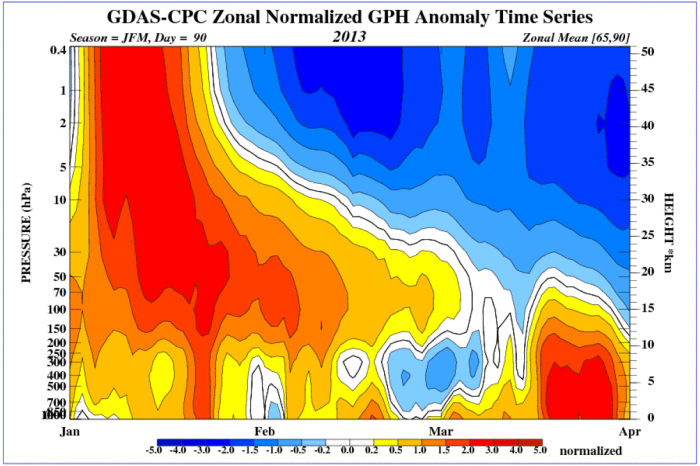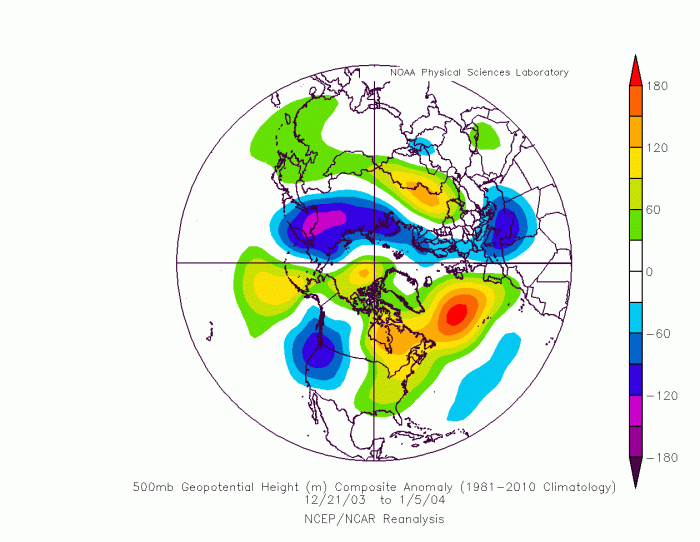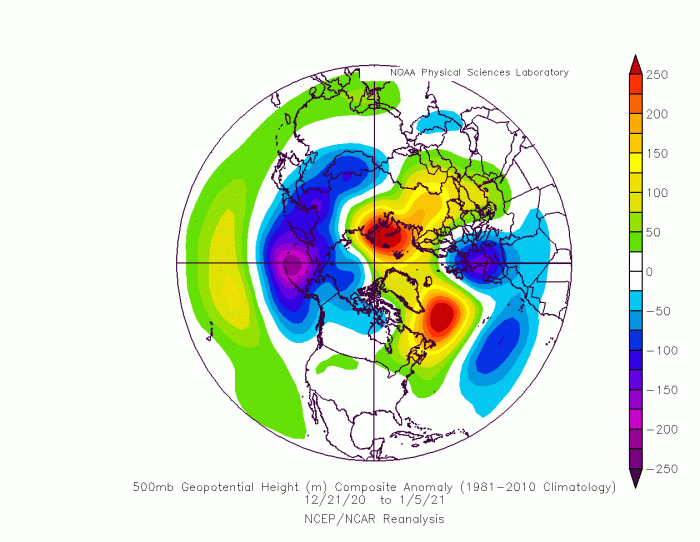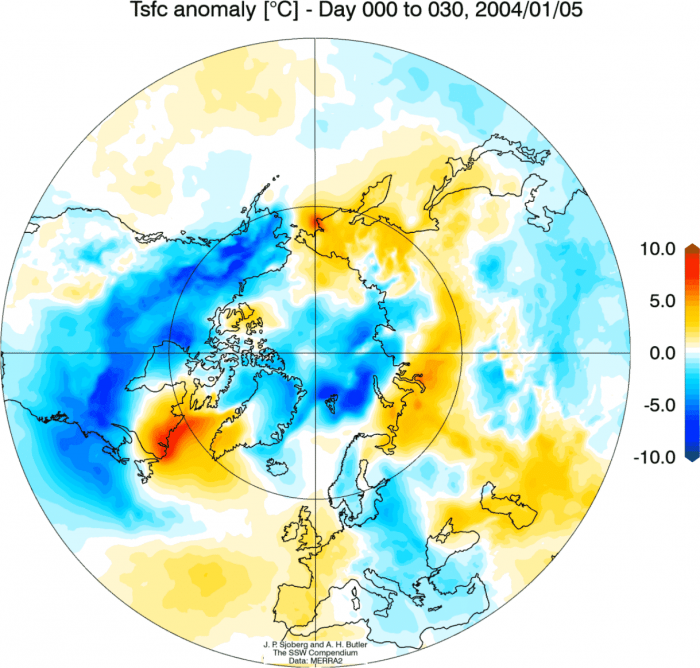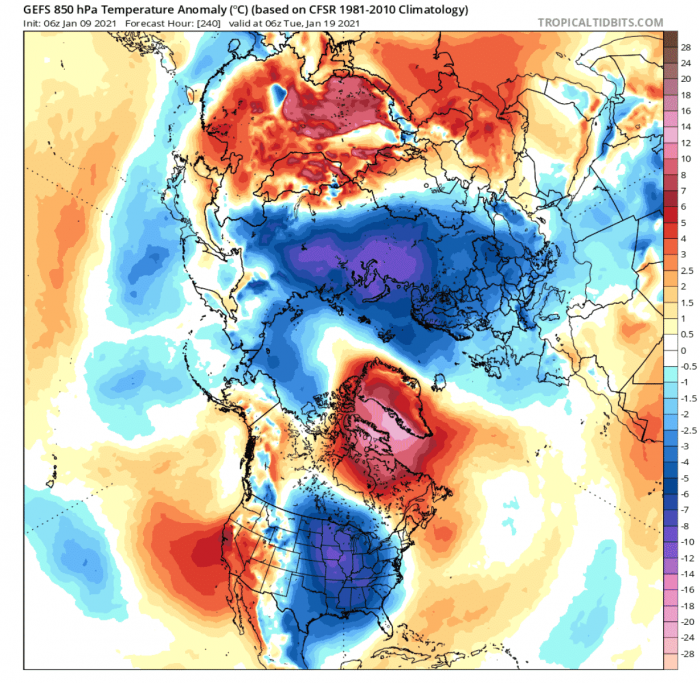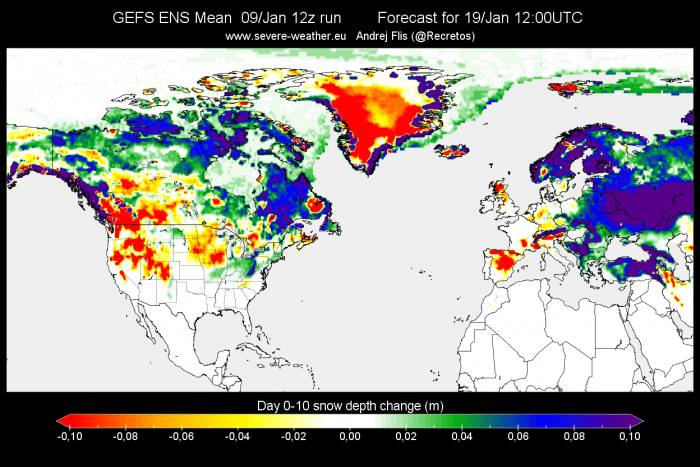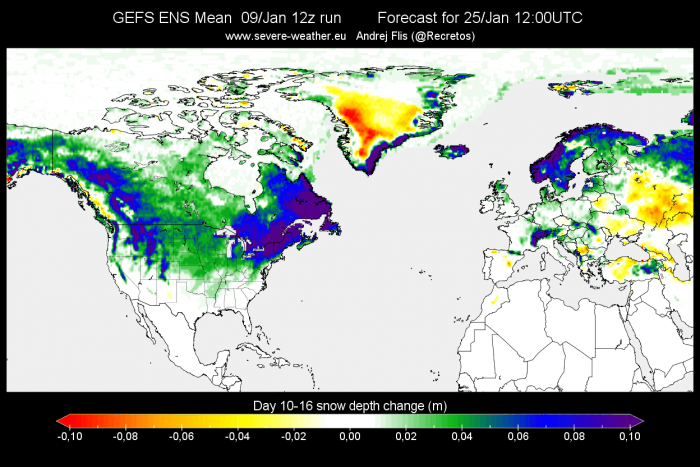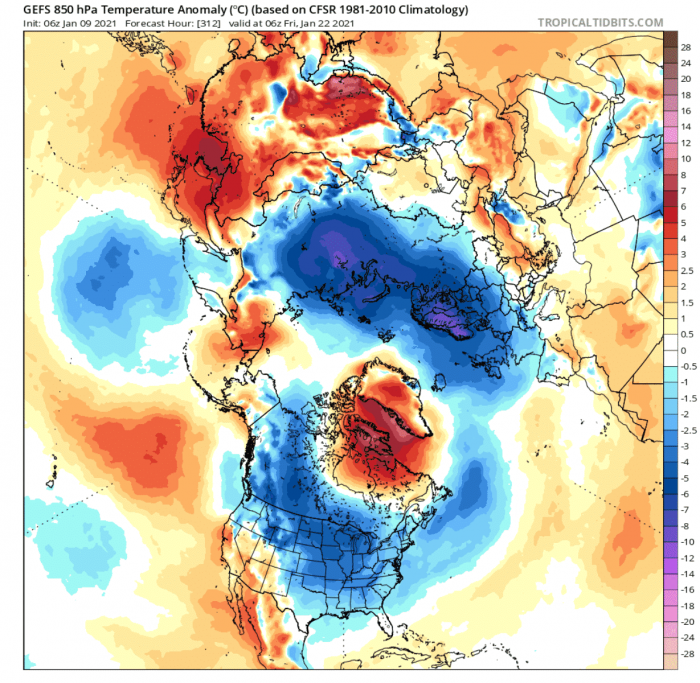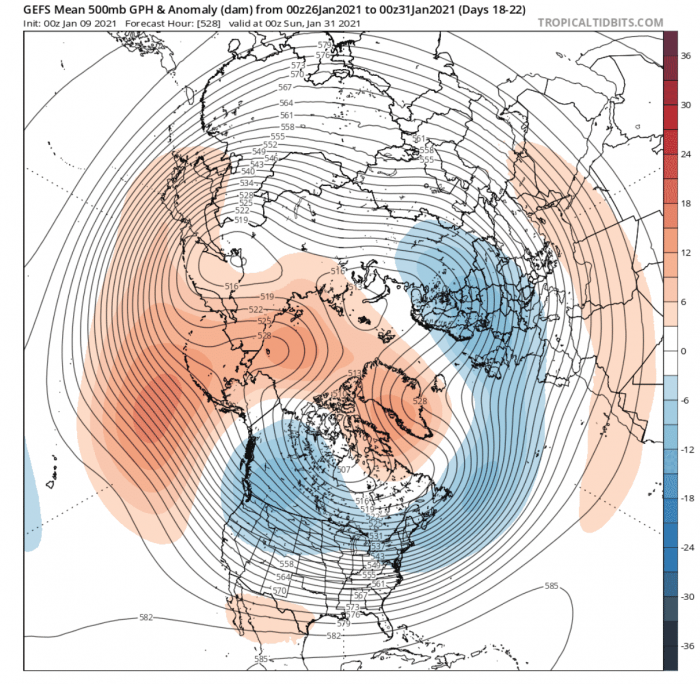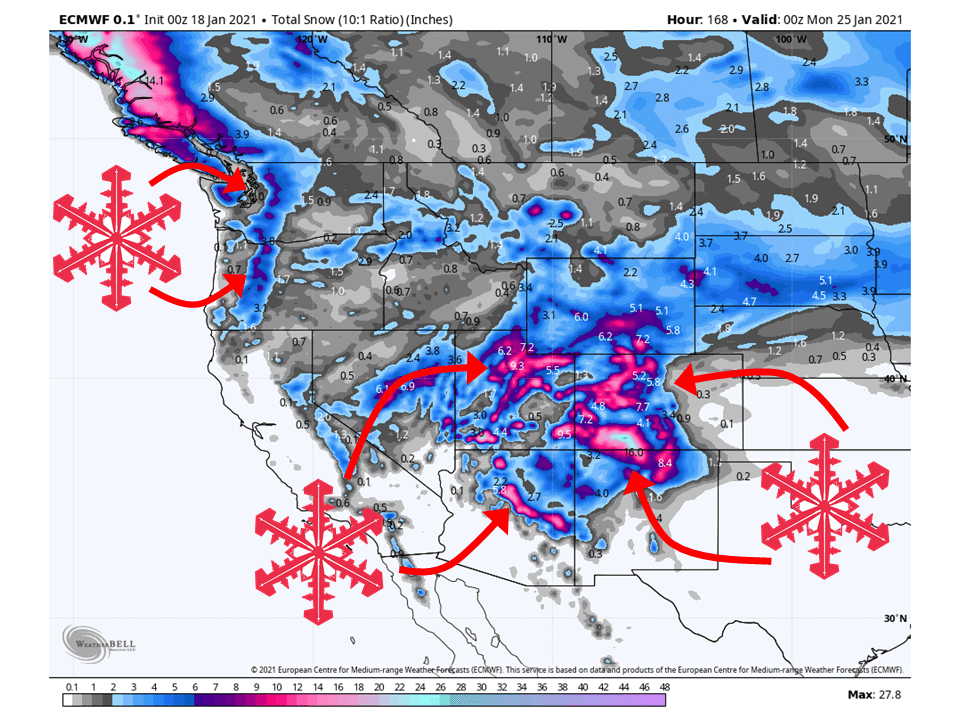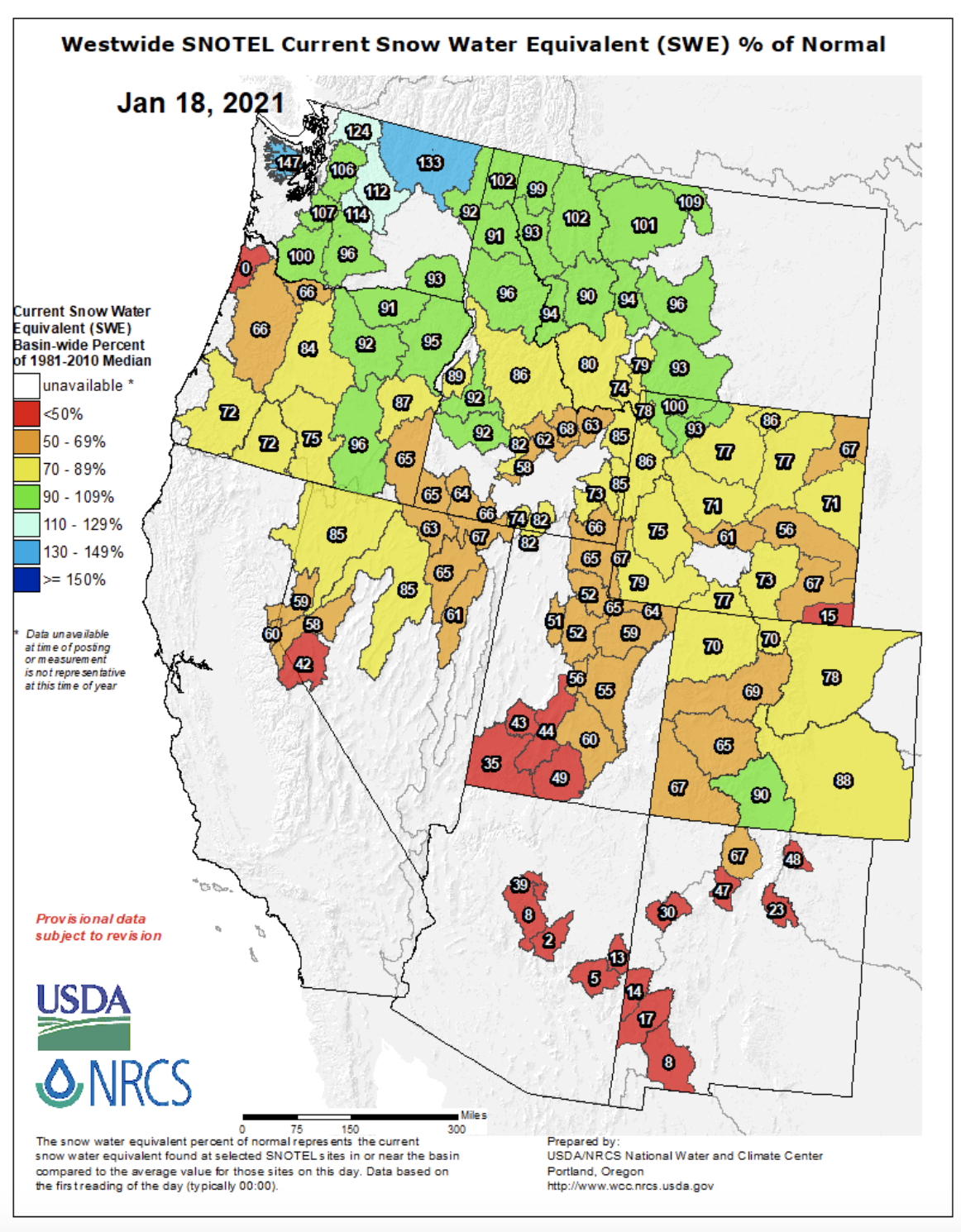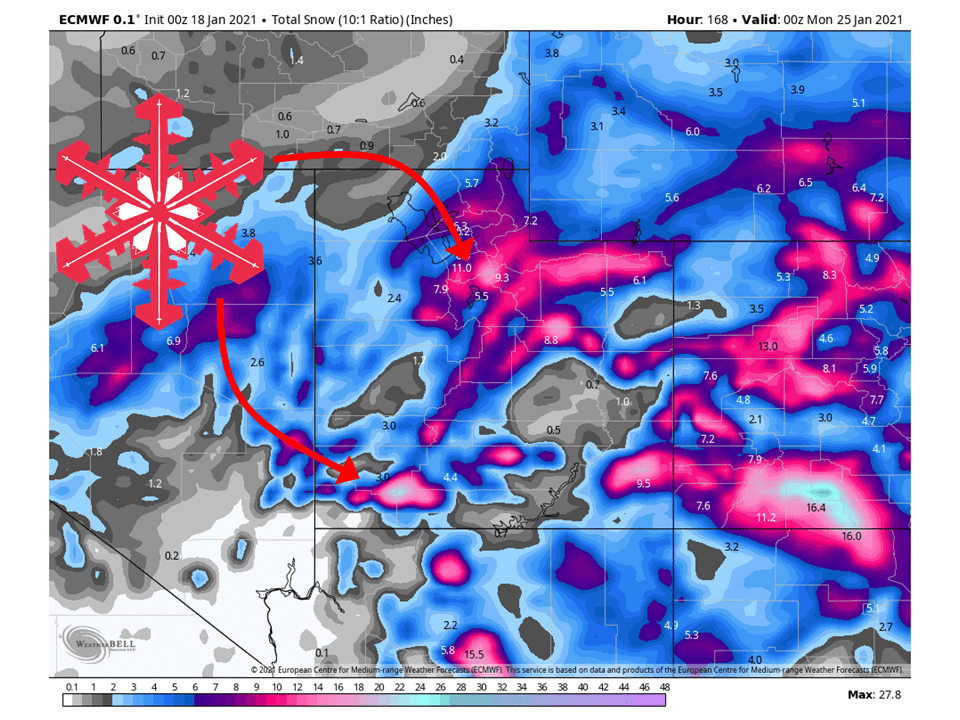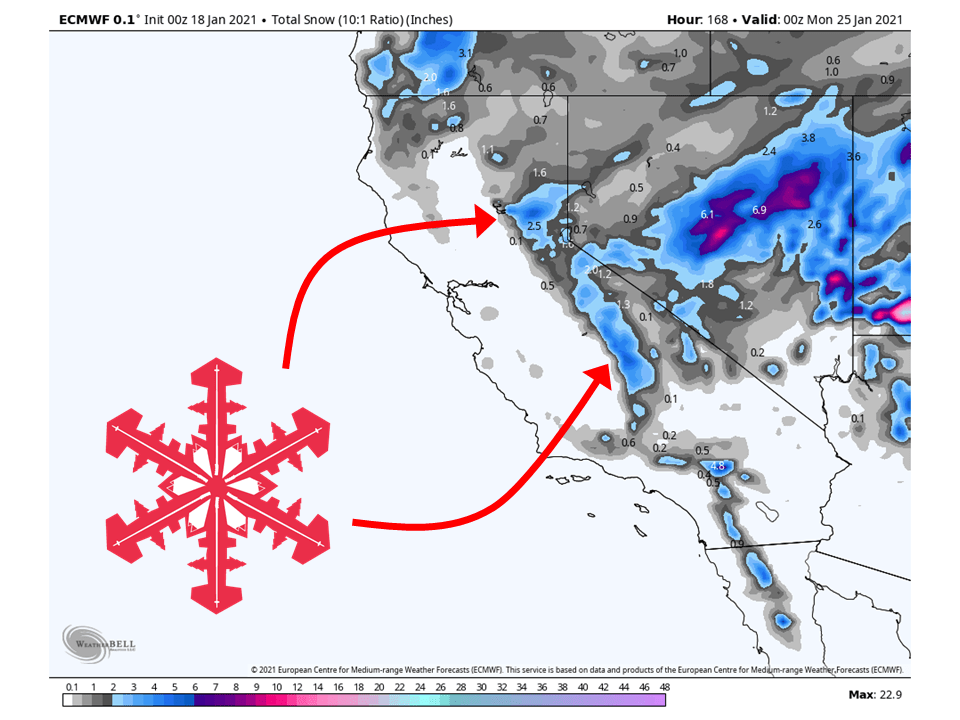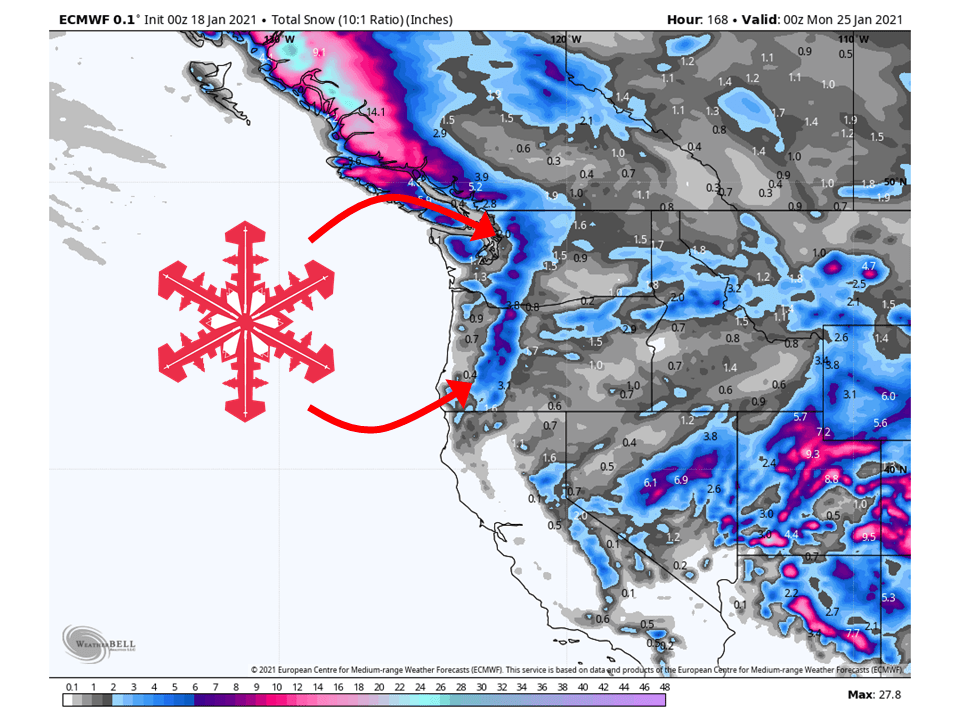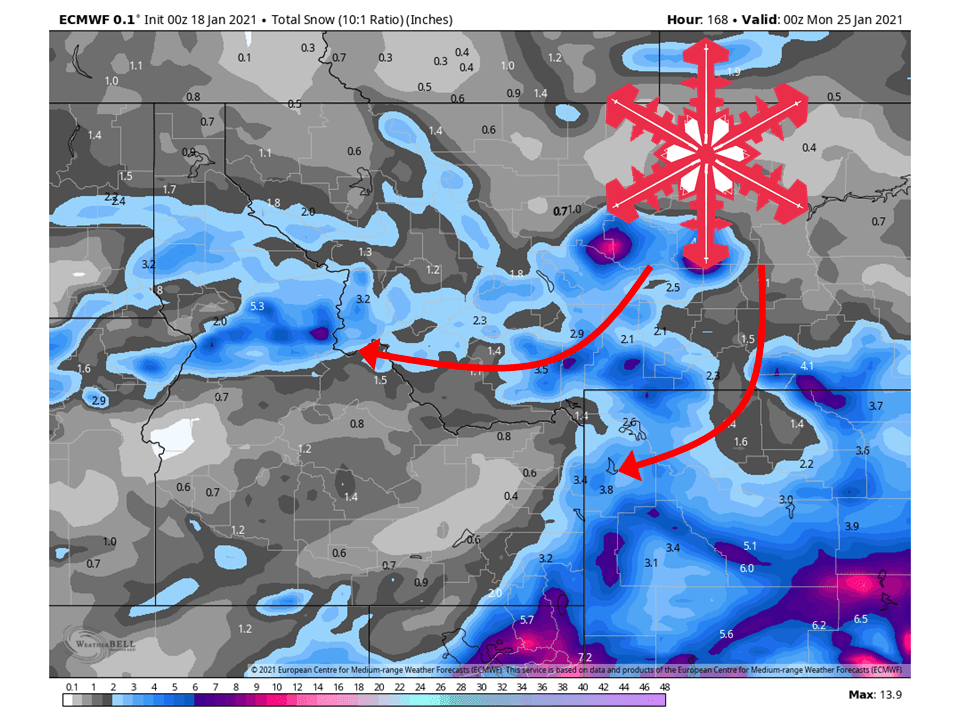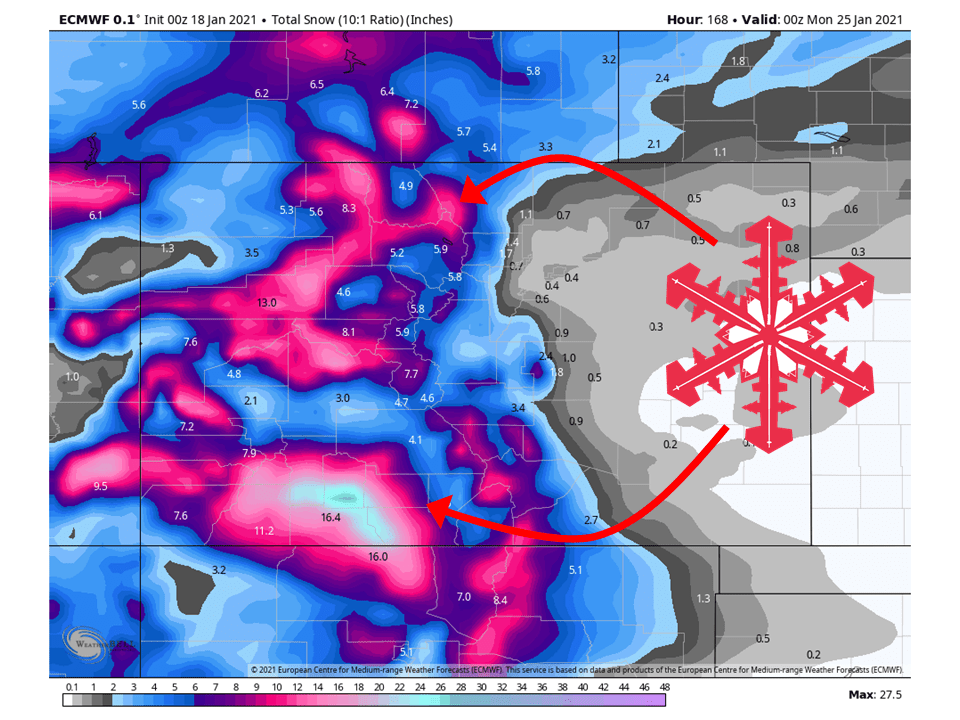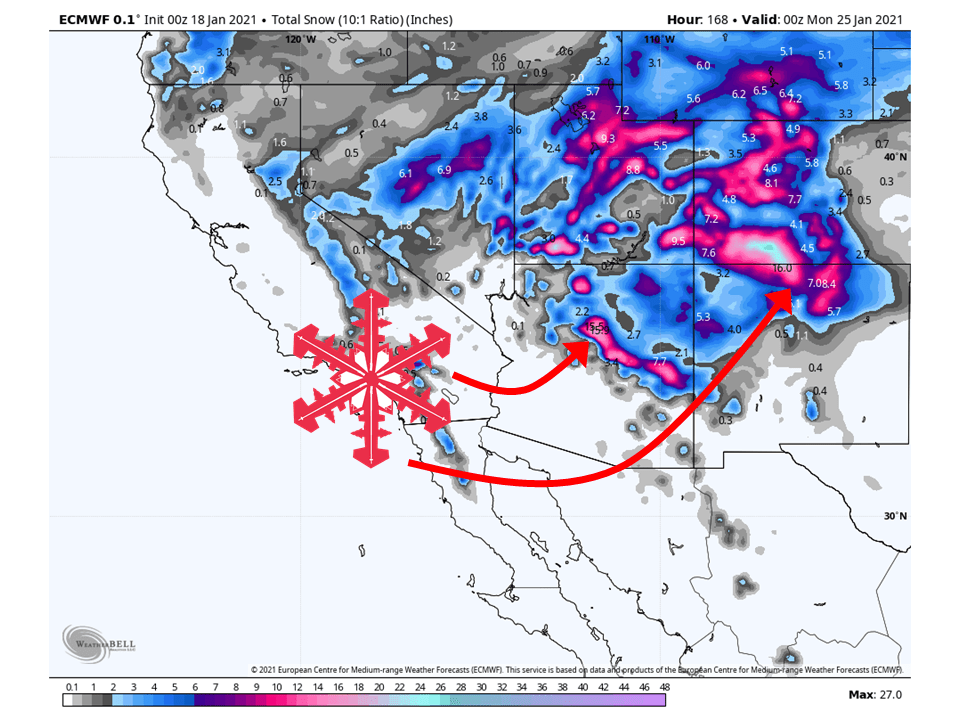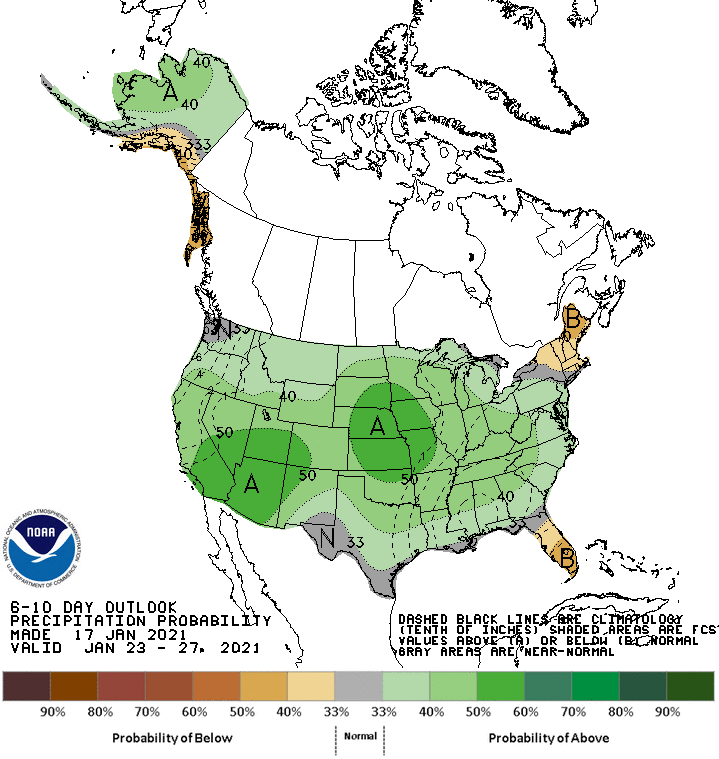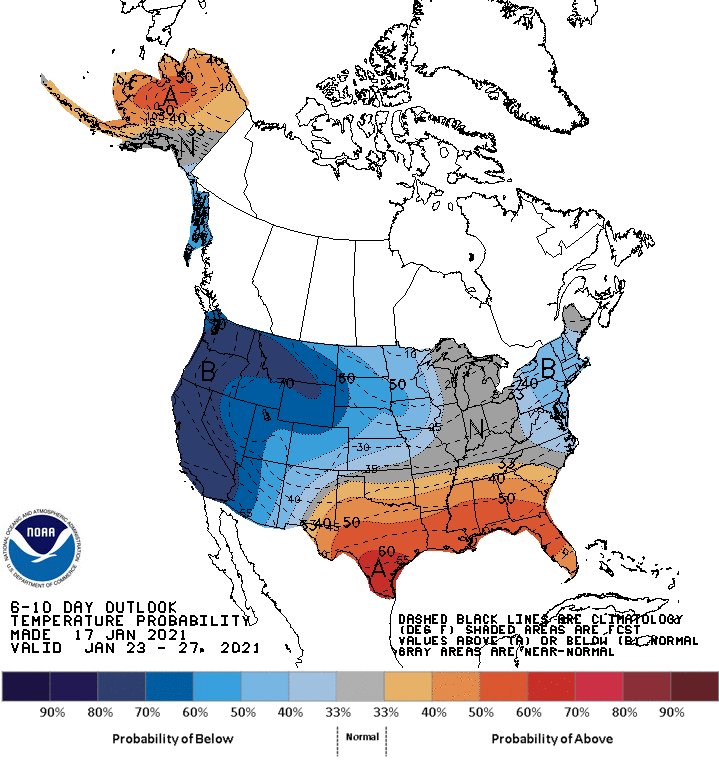This is a rather DEEP DIVE into weather forecasting.
Lots of prognostication most SnoWesters won't be interested.But pay attention to the text I RED BOLDED, thats all that matters....
The Polar Vortex now collapsing, is set to release the Arctic Hounds for the United States and Europe, as we head for the second half of Winter 2020/2021
By Andrej Flis | Global weather | 10 January 2021
A Polar Vortex collapse sequence has begun in late December 2020, with a major Sudden Stratospheric Warming event on January 5th, 2021. We will look at the sequence of these events, and how they can change the weather in Europe and the United States in the coming weeks.
The main “player” in these weather events, is of course the Polar Vortex. It connects the bottom of the atmosphere (our weather) with the stratosphere above it. A strong exchange of energy between these two layers can heavily disrupt the weather development across the Northern Hemisphere.
WHAT IS THE POLAR VORTEX?
Since knowledge is the key, we will do a quick recap of what exactly is the Polar Vortex.
All of the clouds (and the weather that we feel) are found in the lowest part of the atmosphere called the troposphere. It reaches up to around 8 km (5 miles) altitude over the polar regions and up to around 14-16 km (9-10 miles) over the tropics.
Above it, there is a much deeper layer called the stratosphere. This layer is around 30 km thick and is very dry. We can see the layers of the atmosphere on the image below, with the stratosphere in green hues, and the troposphere in blue at the bottom.
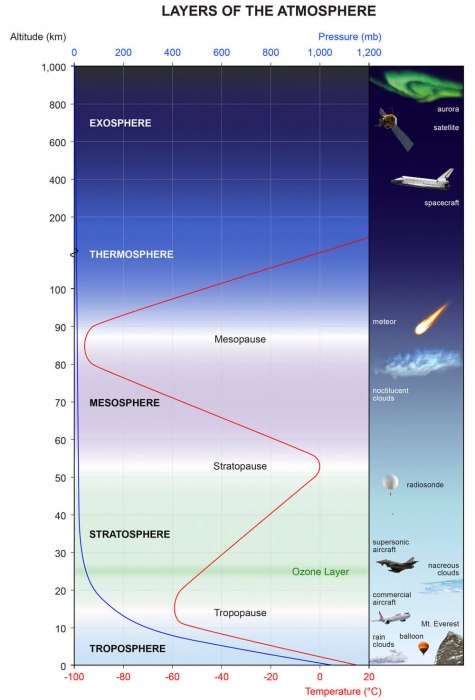
Every year as we head into autumn, the north pole starts to cool. But the atmosphere further south is still relatively warm as it is still receiving energy from the Sun. The north pole receives very little sunlight and thermal energy, cooling at a faster rate.
The reduction in temperature also means a gradual pressure drop over the north pole. In the stratosphere, the process is the same. As the temperature drops over the pole and the temperature difference towards the south increases, a low-pressure area starts to develop across the stratosphere.
The image below shows a typical example of the Polar Vortex at around 30km altitude (10mb level) in the middle stratosphere.
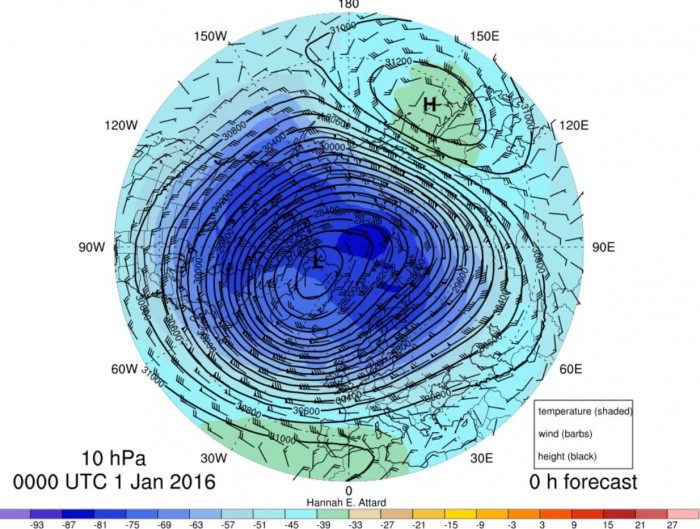
Home » Global weather » You are reading »
The Polar Vortex now collapsing, is set to release the Arctic Hounds for the United States and Europe, as we head for the second half of Winter 2020/2021
By Andrej Flis | Global weather | 10 January 2021
TwitterRedditFacebookPinterestWhatsApp
A Polar Vortex collapse sequence has begun in late December 2020, with a major Sudden Stratospheric Warming event on January 5th, 2021. We will look at the sequence of these events, and how they can change the weather in Europe and the United States in the coming weeks.
The main “player” in these weather events, is of course the Polar Vortex. It connects the bottom of the atmosphere (our weather) with the stratosphere above it. A strong exchange of energy between these two layers can heavily disrupt the weather development across the Northern Hemisphere.
WHAT IS THE POLAR VORTEX?
Since knowledge is the key, we will do a quick recap of what exactly is the Polar Vortex.All of the clouds (and the weather that we feel) are found in the lowest part of the atmosphere called the troposphere. It reaches up to around 8 km (5 miles) altitude over the polar regions and up to around 14-16 km (9-10 miles) over the tropics.
Above it, there is a much deeper layer called the stratosphere. This layer is around 30 km thick and is very dry. We can see the layers of the atmosphere on the image below, with the stratosphere in green hues, and the troposphere in blue at the bottom.

Every year as we head into autumn, the north pole starts to cool. But the atmosphere further south is still relatively warm as it is still receiving energy from the Sun. The north pole receives very little sunlight and thermal energy, cooling at a faster rate.
The reduction in temperature also means a gradual pressure drop over the north pole. In the stratosphere, the process is the same. As the temperature drops over the pole and the temperature difference towards the south increases, a low-pressure area starts to develop across the stratosphere.
The image below shows a typical example of the Polar Vortex at around 30km altitude (10mb level) in the middle stratosphere.

It is almost like a very large cyclone, covering the whole north pole, down to the mid-latitudes. The polar vortex is present at all levels, almost from the ground up. The image below shows the polar vortex at different altitudes. The closer to the ground we get, the more deformed it gets, due to the complex terrain and the many weather fronts and systems.

We produced a high-resolution video for you below, which very nicely shows the Polar Vortex spinning over the Northern Hemisphere. It covers the period from December 2020 to January 2021, made from NASA GEOS-5 data.
Video shows the 10mb level (30km altitude) potential vorticity parameter, which overly simplified means, that it shows the energy of the polar vortex. Be aware of how the energy is being taken away from the polar vortex by the invisible polar Anticyclones (having a different kind of power), spinning in the opposite direction.
Last edited:







